I Brought My Daughter to a Coral Nursery in the Bahamas — and She Fell in Love With the Ocean
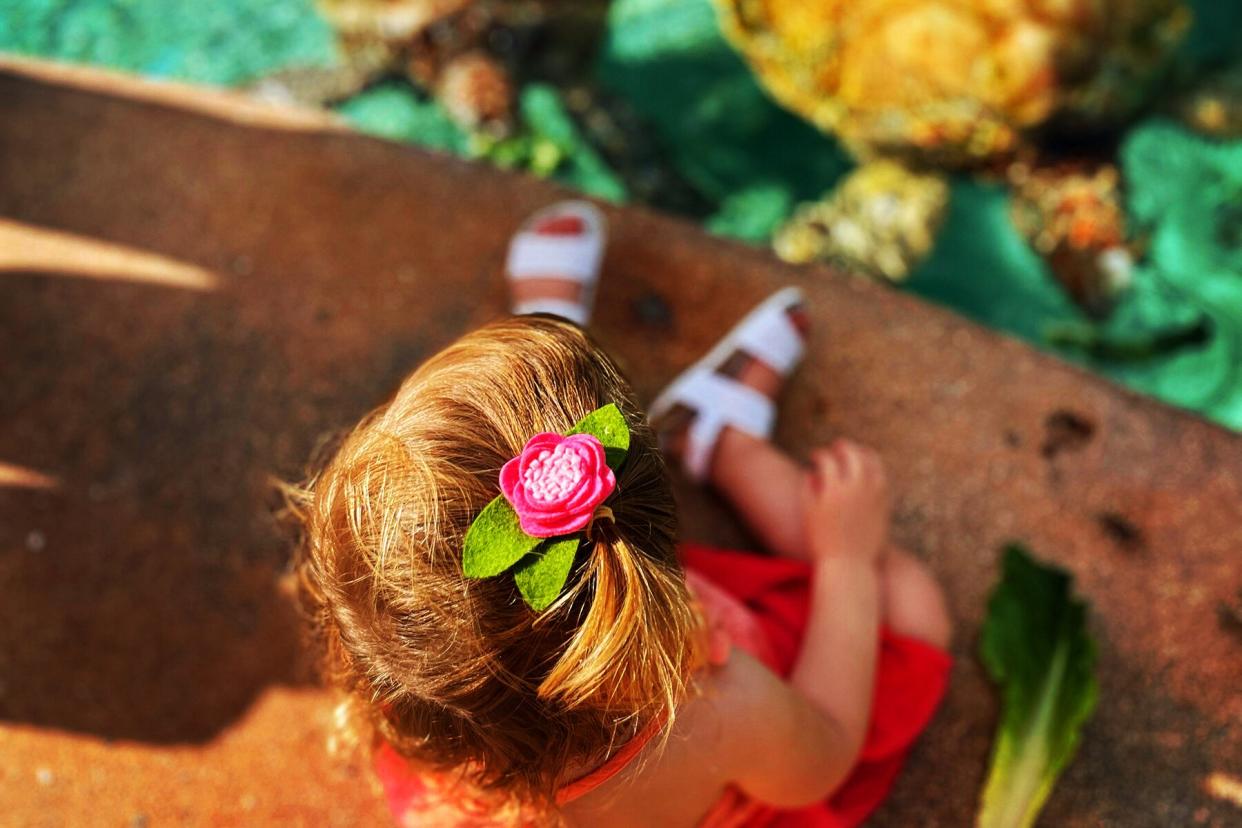
Tiffan Borelli
In choppy, turquoise waters off the coast of Clifton Heritage Park on the Bahamian island of New Providence, I snorkeled toward Casuarina McKinney-Lambert, my intrepid guide. (She is, I'm convinced, part mermaid.) A native of nearby Eleuthera, she's the executive director of the Bahamas Reef Environmental Education Foundation (BREEF), a nonprofit educating locals about protecting and restoring the country's troubled reefs.
"Follow me!" she called over the waves, flipping her hair behind the collar of her ScubaPro rash guard and holding up her Baywatch-red lifeguard buoy.
This realm – the one full of beau gregory damselfish, sergeant majors, parrot fish, squirrel fish, and queen angelfish darting below us – is her aquatic classroom, a coral nursery site that hosts 3,000 students a year for enrichment programs. It's also home to a living art gallery and the world's largest underwater sculpture: Jason deCaires Taylor's 60-ton "Ocean Atlas," a statement on the power and importance of protecting the oceans, and itself the destination of our be-flippered jaunt.
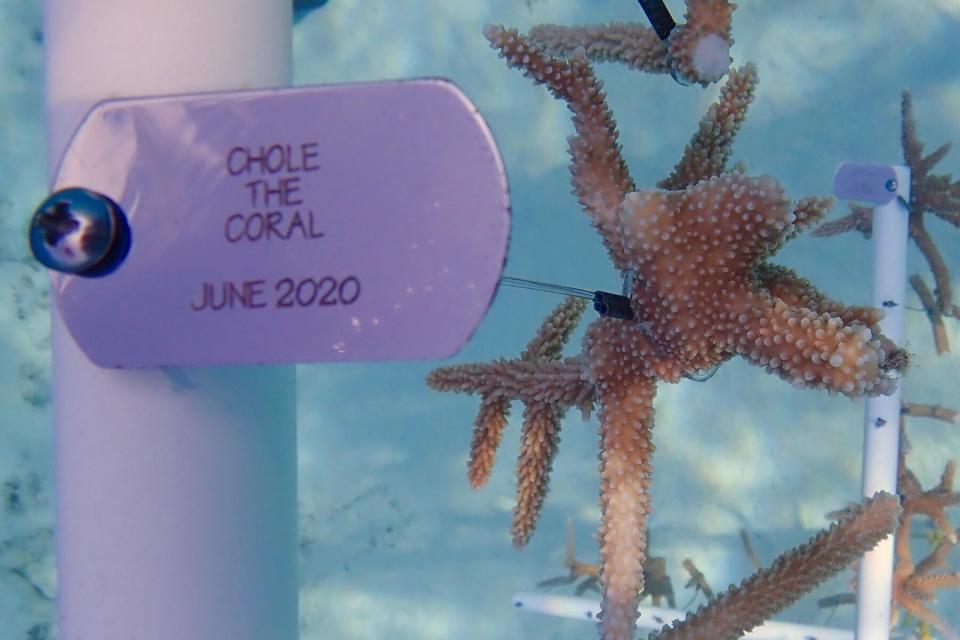
Courtesy of Bahamas Reef Environment Educational Foundation
But I'm not here just as a leisure swimmer and curious art lover. I've also come to examine the coral propagation unit where my wife and I adopted a staghorn coral polyp for our daughter, Odella, in celebration of her second birthday. Rosewood Baha Mar facilitated this exclusive experience dubbed "Coral Reefs: A Citizen Science Program," which allows visitors like me to take an active stake in the region's vital sustainability efforts. In addition to this curated ocean excursion, my wife and I got to custom-caption a plaque that will be permanently affixed to the coral propagation unit in commemoration of our daughter's mini coral colony.
A polyp costs $150, but it's also possible to adopt a coral fragment for $350 or an entire coral head for $1,000. Customers can decide if they want their coral and tag to be at this BREEF Sir Nicholas Nuttall Coral Reef Sculpture Garden or at the nearby Andros Great Barrier Reef, the third-largest barrier reef in the world after those in Australia and Belize. It's a particularly popular gift for Valentine's Day, anniversaries, and birthdays, McKinney-Lambert said. With environmental conservation all the more top of mind for me as I think about my young daughter's future on this planet, I was thrilled to participate in this opportunity to endow in her an early awareness about the importance of protecting the natural world.
"People want to do more than sit on the beach and get sunburned," McKinney-Lambert said. "They want their kids to be immersed in new experiences, new perspectives, and something that involves giving back."
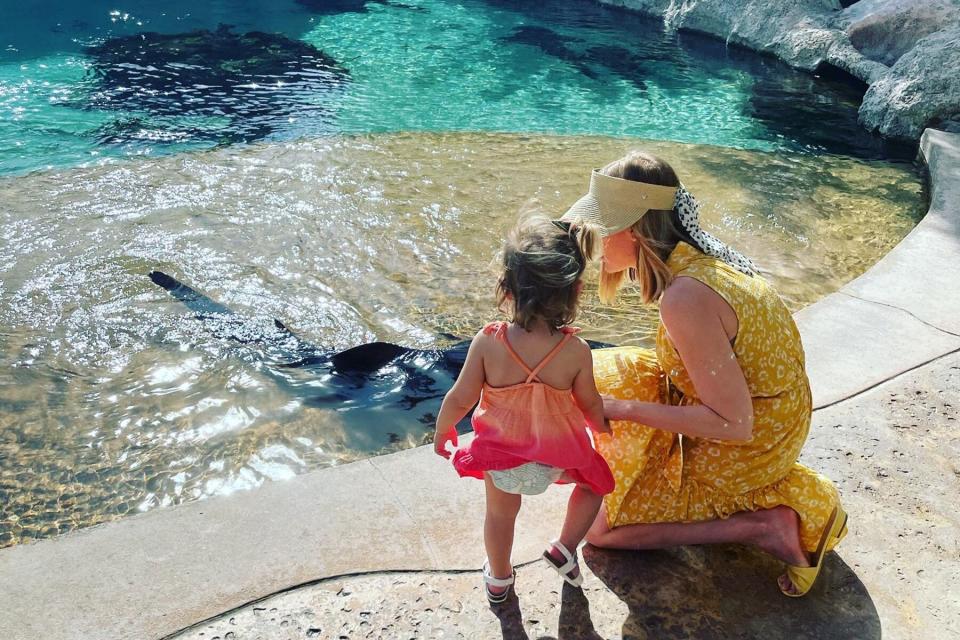
Ross Kenneth Urken
As we swam toward the main sculpture and away from the beach garnished with soggy sargassum seaweed, McKinney-Lambert, who grew up fishing and free-diving, told me she has seen reefs die out in her lifetime and noticed the concomitant depopulation of fish.
After all, the UN's 2021 Intergovernmental Panel on Climate Change (IPCC) report highlighted that even if nations managed to cut emissions steeply and limit world temperature increases by only 1.5 degrees Celsius, coral reefs would still suffer mass die-offs. And compared to the vibrant reefs of the 1970s, the Caribbean has seen about half its corals die out in the last 50 years. And some species, like the antler-shaped elkhorn and staghorn corals, have seen 80% of their populations disappear. Climate change, invasive overfishing (including blasting reefs with dynamite), pollution, anchor damage, and the highly contagious stony coral tissue loss disease (SCTLD) have destroyed huge swaths of healthy coral throughout the region. This has grave consequences for the biodiversity of oceans and the fish and other marine species that rely on these habitats to thrive. Dwindling coral reefs make it more difficult for coastlines to weather damage from hurricanes and other meteorological events.
"We need to speed up nature's recovery," McKinney-Lambert said.
As we got sloshed about in the whitecaps, my goggles started to fog and the brackish water rinsed my throat. As I drifted along and caught my bearings, I suddenly looked below only to see "Ocean Atlas" beaming up at me. Modeled after a 13-year-old Bahamian girl, the 5-meter sculpture presents a crouching, somnolent figure who introduces a twist on the titular mythical Greek Titan who holds up the sky: the girl's massive right hand lies flat at shoulder level as if lifting up the weight of the ocean. Made mostly of pH-neutral cement, stainless steel, and basalt, the sculpture provides an artificial reef that encourages coral growth and provides a novel place for marine life to colonize and inhabit while steering tourists away from natural reefs.
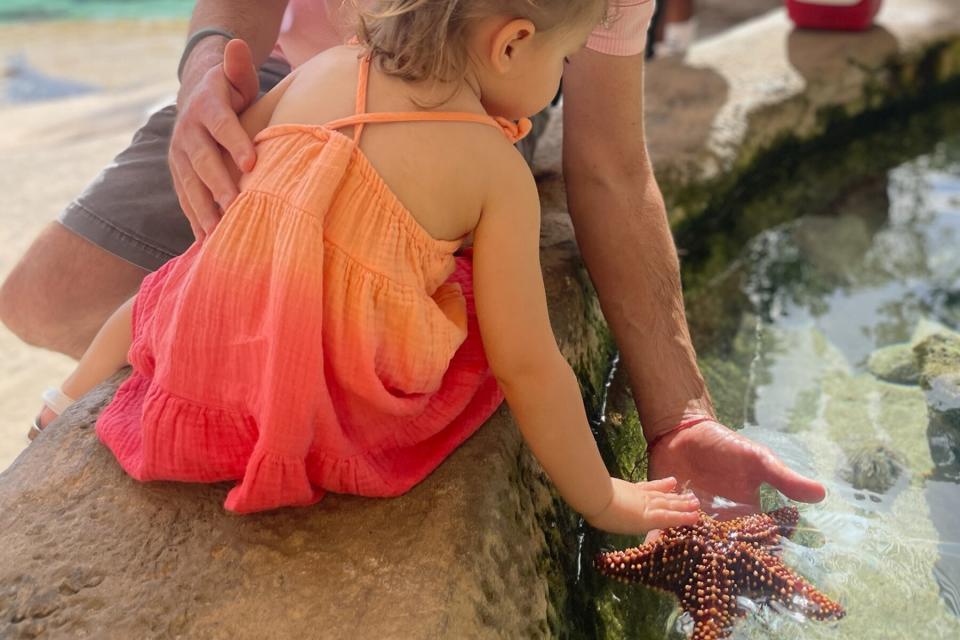
Tiffan Borelli
"Brain coral is now growing on her brain," McKinney-Lambert said as we hovered over the sculpture. "It's as if she's hatched an idea."
The idea, symbolically at least, concerns shouldering the burdensome responsibility of conservation.
"The future of our oceans and ultimately our planet is in the hands of the next generation," McKinney-Lambert said. "I've been so impressed by these young people who are standing up… all of us old people are going to be dead and gone, and these young people are going to have the responsibility."
The empowering message of this sculpture bestows the mantel of the future on young citizens of the world, like my daughter. BREEF's programming aims to get local Bahamians in the ocean and teach them to be passionate about long-term conservation efforts.
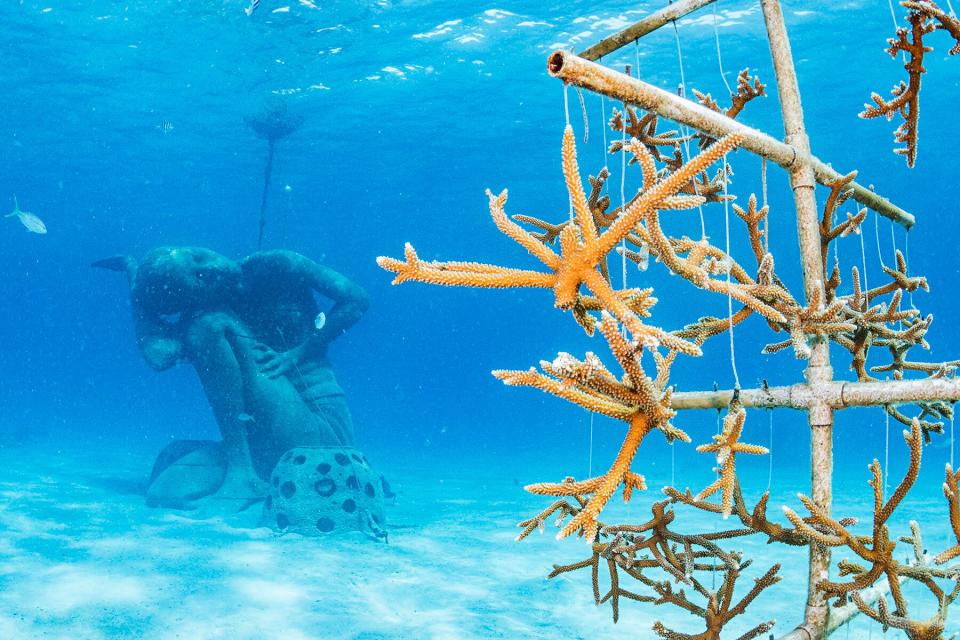
Shane Gross/Courtesy of Bahamas Reef Environment Educational Foundation
As meaningful as it is to take an active role in coral reef conservation and have a hands-on experience in a dynamic submarine environment, perhaps there's something a smidge performative about this type of altruism. When I mentioned the coral polyp adoption to a friend, whose constitution has long been eroded by chagrin and cynicism, he bristled and didn't take to the program hook, line, and sinker – as sweet, he admitted, as the gesture was.
Back at Rosewood Baha Mar, it was important to get La La hooked on the ocean if she was going to have any vested interest in its well-being. So she participated in the newly launched Experience Wildlife program, exclusive to Rosewood Baha Mar through the Baha Bay Sanctuary. She fed green turtles, greeted stingrays and nurse sharks, and enjoyed a touch tank where she petted a star fish, a spindly sea urchin, a horseshoe crab, a conch, and a loogie-textured sea cucumber. Non-aquatic experiences in the program included feeding tortoises, budgerigar parakeets (known as "budgies"), and Caribbean flamingos (the national bird of the Bahamas). These interactions – which injected in her a love of nature and, in particular, an early love of the ocean and its inhabitants – will stick with her long after we're done shaking sand from our shoes.
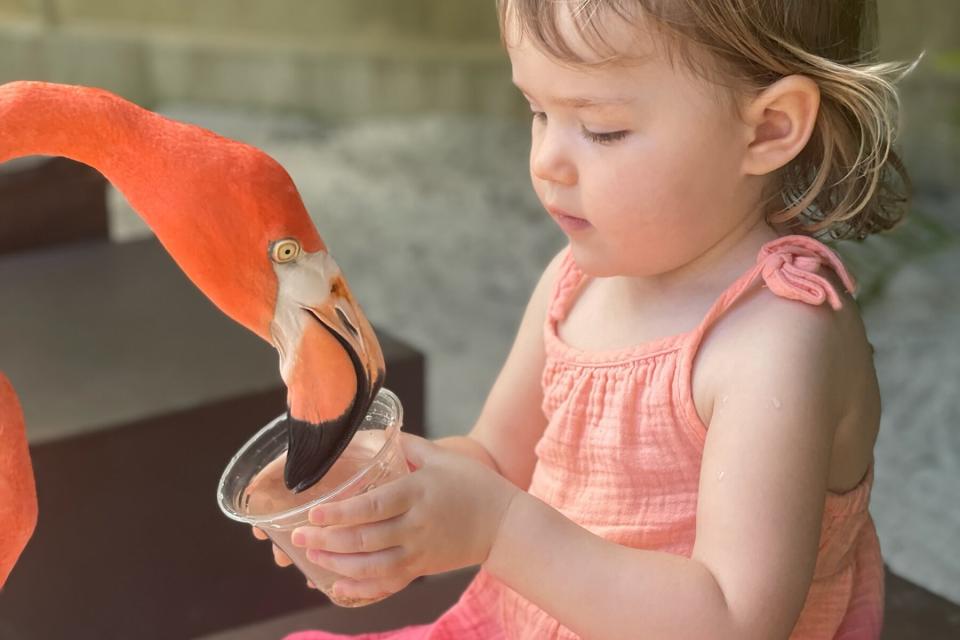
Tiffan Borelli
Six months from now, when Odella is two and a half, we'll get a photographic update of the coral polyp. Year after year, the staghorn coral will grow and be trimmed and out-planted on the reef. Parents want to give their children the world. At this juncture, at least, we've given her a part of the ocean.

